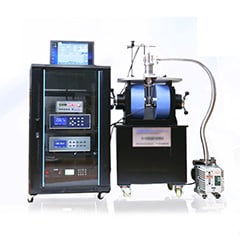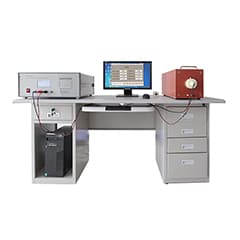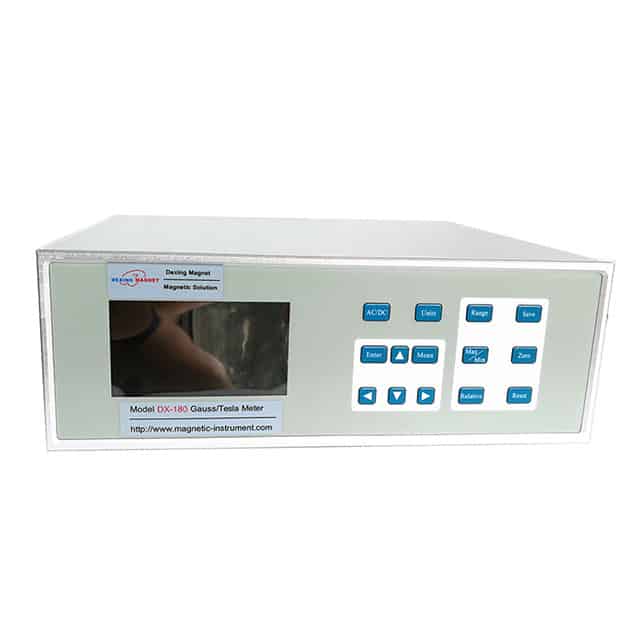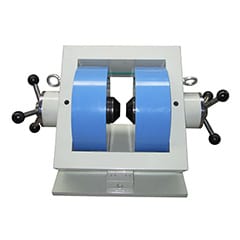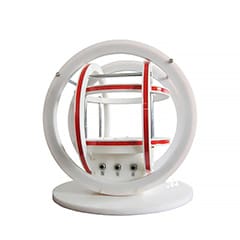products categories
contact us
- If you have questions, please contact us, all questions will be answered
- Tel : 18030236818
- Fax : +86-592 5237901
- Email : dexing@china-dexing.com
Hall Effect Measurement System
Homogenization of magnetic resonance system technology
Why homogenize?
Firstly, the basic theory of MR is reviewed: under the premise of a certain magnetic field direction, applying a radio frequency field perpendicular to the direction of the main magnetic field will cause hydrogen protons to deflect, and the recovery process after the deflection will produce useful MR signals. This deflection is actually produced by the word "resonance" in our magnetic resonance。
What is resonance?
Basically, they have the same frequency. So to generate Mr, you need the Larmor precession frequency of the hydrogen proton in the main magnetic field (described earlier) to be equal to the frequency of the rf field.
Suppose that if the magnetic field is not uniform over a certain range, then an identical block of material within that range contains hydrogen protons with a different Larmor precession frequency. Then, when the material receives a certain frequency of the radio frequency field, there are regions where the hydrogen protons do not resonate/deflect, and the MR signal cannot be produced without deflecting, and the end result may be an image of an identical uniform material with different shades of light. This is certainly not acceptable.
Suppose again, we talked about the role of layer selection in gradient fields. If the main magnetic field is not uniform, the layer selection will be interfered by the signal generated by deflected hydrogen protons under the same field intensity nearby.
We can easily control the emission frequency of the rf field in real time, but the frequency of the magnetic field, as we'll see, is influenced by the innate structure of the magnet, and is not very uniform within a certain range, so we need to homogenize the field so that the magnetic field is as uniform as possible.
The uniformity of magnetic field is an important criterion to measure the quality of MR equipment.
Below we will specifically explain the general magnetic field properties and several means and principles of uniform field.
Reviewing the structure of the superconducting magnet mentioned above, in the central circular hole of the superconducting electromagnet, if there is no constraint, the magnetic induction lines are not always distributed in parallel, but form a distribution state of divergence at both ends of the magnet and approximately parallel in the middle.
So the basic idea here is that homogenization does not require that all areas in the hole of the magnet be uniform, but that the scanned area be uniform.
The larger the uniform area, the more difficult it is to uniform the field, which in part explains why it is such a breakthrough for a superconducting MAGNETIC resonance system to make the hole diameter even slightly larger. Philips' traditional Multiva device has a magnetic hole diameter of 60cm, while the current high-end Ingenia model can have a hole diameter of 70cm (update: there are already 75cm superconducting mrIs).
Passive shimming
A silicon steel sheet with a diamagnetic material added at a specific position inside the magnet hole is used to attract the magnetic induction lines to the desired direction so as to maintain the horizontal distribution of the magnetic induction lines.
The process of passive homogenization is very tedious and complicated, and a customized homogenization frame and magnetic field detector are placed in the hole of the magnet
The main magnetic field is compensated by the magnetic field generated by the electromagnetic coil.
Since the human body is also a diamagnetic substance, patients in the magnet will also change the distribution of the magnetic field, and different people will change the magnetic field differently, so it is necessary to introduce an active uniform field that can change timely for each patient.
The corresponding spatial coordinate is a linear straight line, so the first-order active uniform field is to superimpose a linear magnetic field on the original main magnetic field to compensate for the uneven magnetic field. This function can be directly realized by using gradient coil, by applying appropriate current on the X, Y and Z axis coils.
The advantage of first-order active leveling is that it is relatively simple to implement, and can be realized directly with the gradient coil and gradient amplifier, and the compensation speed is very fast. At the same time, compensating parameters can be obtained by appropriate scanning analysis before each scan to make the magnetic field uniform.
Similarly, if you are interested, you can calculate the cost to realize the third-order active homogenization. Since the boundary effect of magnetic field uniformity is gradually reduced, it is no longer necessary to realize the second-order active homogenization at a great cost.






